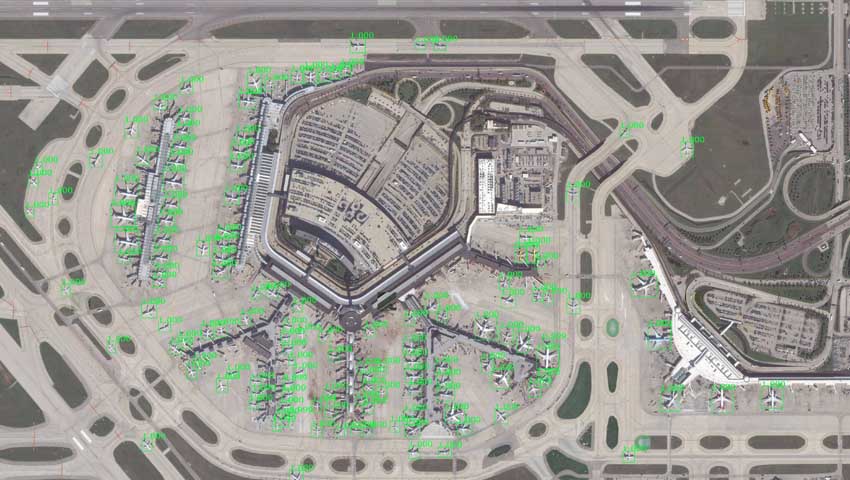Global Automated Target Recognition (GATR) runs in the cloud, using Maxar’s Geospatial Big Data platform (GBDX) to access Maxar’s 100 petabyte satellite imagery library and millions of curated data labels across dozens of categories that expedite the training of deep learning algorithms.
Fast GPUs let GATR scan a large area very quickly, while deep learning methods automate object recognition and reduce the need for extensive algorithm training.
GATR teaches itself what the identifying characteristics of an object area or target, for example, learning how to distinguish between a cargo plane and a military transport jet. The system scales quickly to scan large areas, including entire countries. GATR uses deep learning techniques common in the commercial sector and can identify ships, airplanes, buildings, seaports and many other categories.
Maria Demaree, vice president and general manager of Lockheed Martin Space Mission Solutions, said, "There’s more commercial satellite data than ever available today, and up until now, identifying objects has been a largely manual process. Artificial intelligence models like GATR keep analysts in control while letting them focus on higher-level tasks."
GATR has a high accuracy rate, well over 90 per cent on the models tested so far. It only took two hours to search the entire state of Pennsylvania for fracking sites – that’s 120,000 square kilometres.
"I’m not an expert on what oil production sites are, and I don’t have to be. This system teaches itself the defining characteristics of an object, saving valuable time training an algorithm and ultimately letting an image analyst focus more on their mission," said Mark Pritt, senior fellow at Lockheed Martin and principle investigator for GATR.
GATR builds on research Pritt’s team pioneered during a Intelligence Advanced Research Projects Activity challenge, called the 'Functional Map of the World'. The Lockheed Martin team was the only team from a company who placed in the top five.

